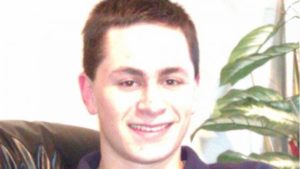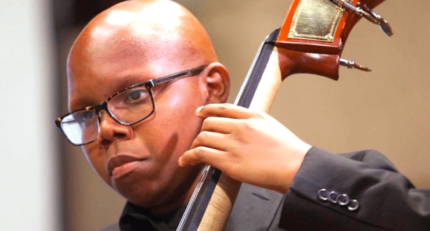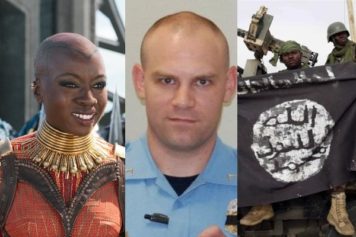BREAKING: Austin serial bombing suspect identified as 24-year-old Mark Anthony Conditt, according to two law enforcement sources familiar with the investigation pic.twitter.com/p7s2SR2La2
— MSNBC (@MSNBC) March 21, 2018
ROUND ROCK, Texas (AP) — The suspect in the deadly bombings that terrorized Austin blew himself up early Wednesday as authorities closed in on him, bringing a grisly end to a three-week manhunt. But police warned that more bombs could be out there.
The suspect’s motive remained a mystery, along with whether he acted alone in the five bombings in the Texas capital and suburban San Antonio that killed two people and wounded four others.
Police zeroed in on the 24-year-old man earlier in the week and located his vehicle at a hotel on Interstate 35 in the suburb of Round Rock. Officers were waiting for armored vehicles to arrive before moving in for an arrest when his vehicle began to drive away, Austin Police Chief Brian Manley said at a news conference.
Authorities followed the vehicle, which ran into a ditch on the side of the road, he said.
When members of the SWAT team approached, the suspect detonated an explosive device inside the vehicle, the police chief said. The blast knocked one officer back, and a second officer fired his weapon, Manley said.

Mark Anthony Conditt
A law enforcement official identified the dead man as Mark Anthony Conditt. The official, who has been briefed on the investigation, spoke to The Associated Press on the condition of anonymity because the official was not authorized to discuss the case publicly.
Authorities released few details about the suspect, except his age and that he was white. But online postings indicate he was home schooled. He later attended Austin Community College from 2010 to 2012, according to a college spokeswoman, but he did not graduate.
In posts dated from 2012, a blogger who identified himself as Mark Conditt of Pflugerville wrote that gay marriage should be illegal, called for the elimination of sex offender registrations and argued in favor of the death penalty. He described his interests as cycling, tennis and listening to music
Of gay marriage, Conditt wrote: “Homosexuality is not natural. Just look at the male and female bodies. They are obviously designed to couple.”
Texas Gov. Greg Abbott told Austin television station KXAN that Conditt was unemployed and that he had been observed making some purchases while wearing a disguise that included a blonde wig and gloves.
The mayor of Pflugerville, an Austin suburb not far from the site of the first of four bombings, said the suspect lived in his city, just two blocks from his house.
Pflugerville resident Jay Schulze said he was jogging Tuesday night when he was stopped by police and asked about the bombings. He said police flew drones over a home for about six hours between Tuesday evening and early Wednesday morning.
He described the home over which the drones were flying as “a weird house with a lot of people coming and going” and a bit rundown.
Austin was hit with four package bombings starting on March 2. A fifth parcel bomb went off early Tuesday at a FedEx distribution center near San Antonio.
Citing a high-ranking law enforcement official, the Austin American-Statesman reported that authorities had identified the suspect based largely on information, including security video, gleaned after he sent an explosive device from an Austin-area FedEx store.
Police warned Wednesday of the possibility that more bombs had yet to be found.
“We don’t know where this suspect has spent his last 24 hours, and therefore we still need to remain vigilant to ensure that no other packages or devices have been left to the community,” Manley said.
Authorities initially believed the bombings may have been hate crimes because the victims of the earliest blasts were black, but they backed off that theory after Hispanic and white victims from different parts of the city were also affected.
Fred Milanowski, an agent with the U.S. Bureau of Alcohol, Tobacco, Firearms and Explosives, said it was “hard to say” if the bombing suspect had acted alone.
“What we do know is we believe the same person built each one of these devices,” said Milanowski, the agent in charge of the Houston division of the ATF.
Asked if the suspect built bombs before the Austin attacks, Milanowski said: “We know when he bought some of the components. It’s hard to say whether he was building along the way.”
Austin Mayor Steve Adler thanked law enforcement for their work in bringing down the suspect and urged residents to continue to report anything that appeared suspicious or out of place.
Isaac Figueroa, 26, said he and his brother heard sirens and helicopters early Wednesday in the area and drove toward them, then cut through nearby woods on foot after they hit a police roadblock.
Figueroa said they saw a sport utility vehicle that was pinned between vehicles and “looked like it had been rammed off the road.” He said he saw police deploy a robot to go examine the Jeep.
President Donald Trump, who had earlier said whoever was responsible for the Austin bombings was “obviously a very sick individual or individuals,” tweeted, “AUSTIN BOMBING SUSPECT IS DEAD. Great job by law enforcement and all concerned!”
The suspect’s death followed a day of rapid-fire developments in the case.
Early Tuesday, a bomb inside a package exploded as it passed along a conveyer belt at a FedEx shipping center in Schertz, northeast of San Antonio and about 60 miles (95 kilometers) southwest of Austin. One worker reported ringing in her ears and was treated at the scene.
Later in the morning, police sent a bomb squad to a FedEx facility outside the Austin airport to check on a suspicious package. Federal agencies and police later said that package had indeed contained an explosive that was successfully intercepted and that it, too, was tied to the other bombings.
The Schertz blast came two days after a bombing wounded two men Sunday night in a quiet Austin neighborhood about 3 miles (5 kilometers) from the FedEx store. It was triggered by a nearly invisible tripwire.


